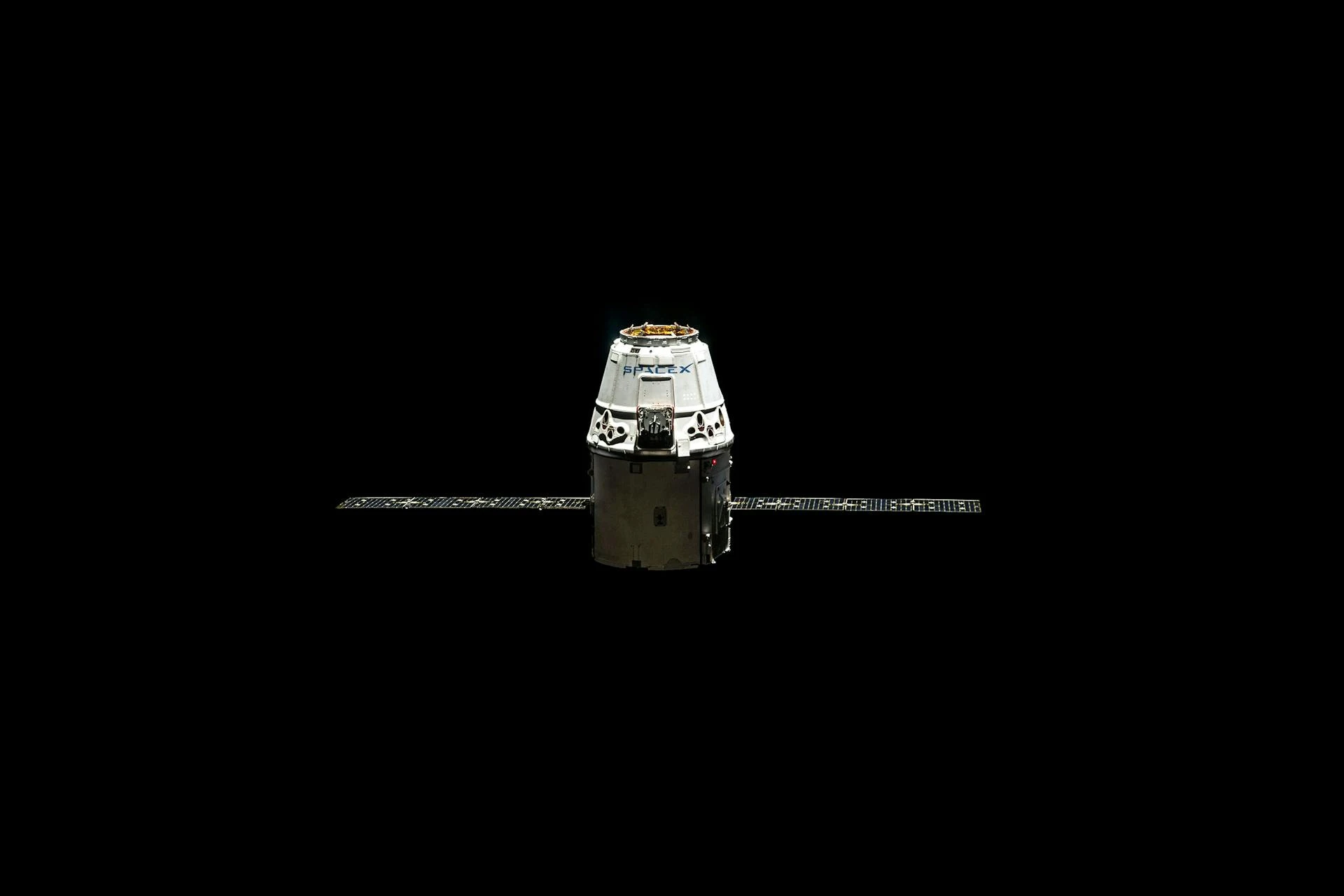In a bold stride toward securing the final frontier, the United States Space Force, in partnership with the pioneering startup Gravitics, has launched a transformative $60 million project that could redefine how satellites are deployed and protected in orbit. This orbital aircraft carrier, a first-of-its-kind platform, enables the direct launch of satellites from Earth’s orbit, bypassing the constraints of traditional rocket systems. Such an advancement signals a dramatic shift in space technology, offering unprecedented speed and flexibility to address urgent national security demands. As space emerges as a critical domain for global power dynamics, this innovation arrives at a pivotal moment. It not only enhances the ability to safeguard critical assets but also positions the U.S. as a frontrunner in a rapidly evolving landscape where technological superiority is paramount. The implications of this development stretch beyond military applications, hinting at a future where public and private sectors collaboratively shape the trajectory of space exploration.
Technological Breakthrough in Space Defense
Revolutionizing Satellite Deployment
The introduction of the orbital carrier marks a significant departure from conventional methods of satellite deployment, which have long relied on time-intensive rocket launches from Earth. This cutting-edge platform, developed through a substantial investment by the Space Force, allows satellites to be pre-positioned and launched directly from orbit. Such a capability ensures rapid response times, a crucial factor when addressing sudden security threats or operational needs in space. By eliminating the delays inherent in ground-based launches, the carrier offers a level of agility previously unattainable, enabling the U.S. to maintain a proactive stance in an increasingly contested environment. This shift is not merely incremental but represents a fundamental rethinking of how space assets are managed, potentially setting a new benchmark for efficiency in military and civilian applications alike.
Beyond the immediacy of deployment, the carrier’s design introduces a host of technical advantages that enhance its strategic value. Engineered to operate in the harsh vacuum of space, it provides an unpressurized environment specifically tailored to house multiple satellites while shielding their sensitive components from extreme conditions. This protective feature ensures that vital elements like batteries and electronics remain operational, even when exposed to radiation or temperature fluctuations. Moreover, the ability to store and deploy satellites on demand addresses the growing need for adaptability in space missions. As threats evolve, having a system that can quickly reposition or replace assets without the logistical burden of Earth-based launches becomes a game-changer. This innovation underscores a broader trend toward resilient and responsive space infrastructure, critical for maintaining operational continuity.
Design Features for Enhanced Protection
One of the standout aspects of the orbital carrier lies in its capacity to safeguard satellite technology against the myriad challenges of the space environment. Unlike traditional systems where satellites are exposed during transit, this platform offers a secure enclosure that mitigates risks such as solar radiation and micrometeorite impacts. The unpressurized design, while seemingly counterintuitive, is meticulously crafted to preserve the integrity of delicate electronics and power systems, ensuring they function reliably during extended missions. This focus on protection is particularly relevant in an era where electronic warfare poses a significant threat to space assets. By prioritizing the durability of critical components, the carrier enhances the longevity and effectiveness of satellites deployed for defense or communication purposes.
Additionally, the carrier’s architecture supports a modular approach, allowing for the simultaneous management of multiple satellites with varying missions. This versatility means that a single platform can cater to diverse operational needs, from surveillance to data transmission, without requiring separate launch events. Such efficiency not only reduces costs but also minimizes the window of vulnerability during deployment phases. The ability to shield assets from both environmental hazards and potential adversarial detection adds a layer of tactical advantage, aligning with broader defense objectives. As space becomes a more crowded and contested domain, innovations like these are essential for ensuring that critical systems remain secure and operational under all circumstances. This design sets a precedent for future platforms, highlighting the importance of resilience in space technology.
Strategic Importance of Orbital Dominance
National Security in Space
Amid escalating geopolitical tensions across the globe, space has emerged as a vital arena for national defense, where control and capability can determine a country’s security posture. The orbital carrier developed by the Space Force addresses this reality head-on by providing a means to maintain U.S. dominance in orbit, a priority underscored by military leaders as essential for safeguarding national interests. With adversaries increasingly focusing on space as a domain for potential conflict, the ability to protect and rapidly deploy satellites becomes a cornerstone of strategic planning. This platform ensures that the U.S. can respond to emerging threats with speed and precision, reinforcing its position as a leader in this critical frontier. The carrier’s introduction reflects a broader recognition that space is no longer a distant concern but a direct extension of terrestrial security challenges.
Furthermore, the geopolitical context surrounding space underscores the urgency of such technological advancements. As nations invest heavily in their own space capabilities, the risk of interference with U.S. assets grows, necessitating robust defensive measures. The carrier serves as a deterrent, signaling a commitment to maintaining an unassailable presence in orbit while protecting vital communication and surveillance systems. Its role extends beyond mere deployment, acting as a shield against disruptions that could impact military operations or civilian infrastructure on Earth. By prioritizing orbital dominance, the Space Force aims to mitigate risks posed by anti-satellite technologies and other hostile actions, ensuring that space remains a secure domain for American interests. This strategic focus highlights the intersection of technology and policy in shaping the future of global security.
Tactical Advantages in Crisis Response
The orbital carrier’s ability to conceal satellites from potential adversaries offers a distinct tactical edge, particularly in scenarios involving electronic warfare or cyber threats. By housing assets within a protective structure until the moment of deployment, the platform minimizes the risk of detection and targeting by hostile forces. This stealth capability is crucial in maintaining the element of surprise, a key factor in military operations where timing can dictate outcomes. Whether responding to a sudden crisis or preempting an attack, the carrier enables the U.S. to act decisively without telegraphing intentions, thereby preserving strategic leverage. Such an advantage is invaluable in a domain where visibility often equates to vulnerability, making this innovation a linchpin of modern defense strategies.
Equally important is the carrier’s capacity for swift deployment during critical situations, ensuring that replacement or reinforcement satellites can be activated without delay. Traditional launch methods, constrained by preparation times and weather conditions, often leave gaps in coverage that adversaries could exploit. In contrast, this orbital solution allows for near-instantaneous action, closing those gaps and maintaining continuous operational capacity. This responsiveness is particularly vital in countering threats like signal jamming or data breaches, where every second counts in restoring functionality. By integrating speed with security, the carrier redefines crisis management in space, providing a robust framework for addressing both current and future challenges. Its impact on military readiness illustrates the evolving nature of warfare, where space plays an increasingly central role.
Public-Private Partnerships Driving Innovation
Collaboration with Gravitics
The partnership between the Space Force and Gravitics exemplifies the transformative potential of combining public resources with private sector ingenuity to advance space technology. This collaboration has been instrumental in bringing the orbital carrier from concept to reality, leveraging Gravitics’ expertise in innovative design to meet stringent defense requirements. By integrating cutting-edge solutions from the private sphere, the Space Force accelerates the development of technologies that might otherwise take years to materialize through traditional channels. This synergy not only enhances military capabilities but also fosters an ecosystem where rapid prototyping and iteration become the norm. The result is a platform that addresses immediate security needs while laying the groundwork for future advancements, demonstrating the power of shared goals in tackling complex challenges.
Moreover, this alliance highlights a shift in how defense projects are conceptualized and executed, moving away from isolated government efforts toward collaborative models. Gravitics brings a fresh perspective, unencumbered by bureaucratic constraints, allowing for bold ideas to take shape under the Space Force’s strategic oversight. This dynamic ensures that the orbital carrier is not just a military asset but a testament to what can be achieved when diverse expertise converges. The partnership also serves as a blueprint for other initiatives, showing how private companies can play a pivotal role in national defense without compromising on innovation or efficiency. As space exploration demands ever-greater resources, such collaborations will likely become a cornerstone of progress, bridging gaps between public mandates and private capabilities.
Dual-Purpose Potential for Broader Impact
Beyond its immediate military applications, the orbital carrier holds significant promise for civilian space endeavors, reflecting the dual-purpose nature of the Space Force-Gravitics collaboration. The technology’s ability to streamline satellite deployment could benefit commercial sectors such as telecommunications and Earth observation, where timely access to orbit is often a competitive advantage. By reducing reliance on costly and time-consuming rocket launches, the platform opens new market opportunities for private entities, potentially lowering the barrier to entry for smaller companies. This democratization of space access could spur innovation across industries, from weather forecasting to global internet coverage, amplifying the carrier’s impact far beyond defense objectives.
Equally compelling is the potential for this technology to inspire further public-private ventures that address both national and global needs. The involvement of companies like Gravitics, with their focus on scalable solutions, suggests that military-driven innovations can have ripple effects in civilian applications, fostering a more interconnected space economy. This crossover potential also raises the prospect of shared infrastructure, where platforms initially designed for security purposes support scientific research or commercial missions. As these partnerships evolve, they could redefine how space is utilized, balancing strategic imperatives with broader societal benefits. The orbital carrier, in this sense, is not just a tool for dominance but a catalyst for a more inclusive approach to exploring and exploiting the vast possibilities of space.









